Saxifrage: description, types, planting and care rules

Saxifrage is an elegant, unpretentious perennial widely used in modern landscape design. Attractive appearance, variety of colors and the ability to take root in difficult conditions have made this plant one of the most popular and demanded among gardeners.


Description
Based on the name of this plant, it is easy to guess about its amazing ability to transform boring and monotonous landscapes dominated by natural stone. Having a strong and developed root system, saxifrage easily takes root on rocky slopes, quickly grows through cracks in rocks, and grows in gorges. Over time, the roots of this hardy plant destroy stone obstacles in their path, forming dense and dense clumps on their fragments. The fact that this flower is able to withstand stones and rocks is also evidenced by its other name - "tear-grass".


The Saxifrage family is very extensive and diverse. According to a number of sources, this family includes from 400 to 600 plant species found not only in Russia, but also in China, Japan and even Africa. Some species of saxifrage, the number of which has significantly decreased due to anthropogenic influence, are the property of the Red Book of the Russian Federation and are under protection.
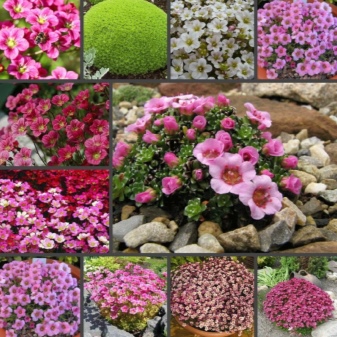

Saxifrage is a low herbaceous perennial, in most cases blooming throughout the summer. There are also annual and biennial varieties of saxifrage, as well as tall members of the family, whose height can reach 80 centimeters. In most species, the leaves are combined in rosettes, have a round or feathery shape. The color of the flowers is also determined by the specific characteristics of the plant. Most often, saxifrage flowers are formed in racemose, corymbose or paniculate inflorescences. After flowering, the plant produces capsule fruits with numerous small seeds.


Plants of this family have long and branching roots, the diameter of which can be up to 1.5 centimeters. The color of the roots ranges from brown to brown and black. Saxifrags are appreciated by flower growers not only for their amazing decorative effect, but also for their numerous medicinal properties.... Thus, the aerial part of the plant (leaves and stems) is often used as a raw material for the preparation of infusions and decoctions used in the treatment of cardiovascular diseases and diseases of the gastrointestinal tract. The roots are used in folk medicine for the preparation of diuretic and cleansing medicinal preparations.


Types and varieties
The species diversity of saxifrage is largely due to the breadth of their habitat. These plants are found not only in mountainous regions, but also in the polar tundra, and in the swampy regions of Asia and northern Europe.
Both cultivated and wild species of saxifrage can be found in modern gardens. To date, breeders have bred many varieties of this plant, which are suitable for growing both in the open field and in indoor conditions. The ampelous forms of saxifrage are especially decorative, the length of the lashes of which can reach 1 meter. There are also varieties with very showy and numerous double flowers.Below are the most famous species and varieties of saxifrage, widespread in indoor floriculture, horticulture and landscape design.


Shadow
A small evergreen perennial that prefers to grow in temperate climates. The plant is appreciated by gardeners for its unpretentiousness, resistance to temperature drop and lack of lighting. As it grows, the shadow saxifrage forms dense emerald clumps 10-15 centimeters high.
During the flowering period, forms elongated peduncles with white flowers, united in paniculate inflorescences.

Snowy
One of the most cold-resistant representatives of the Saxifrage family, found in regions with harsh climates. An adult plant has a compact and low rosette of leaves with wavy edges. Long stems with paniculate inflorescences are formed in the center of the rosette. The flowers are small, with small white petals.


Paniculata
An elegant and rather decorative perennial plant, appreciated by gardeners for its frost resistance, endurance, undemanding soil fertility. During the flowering period, it forms many medium-sized flowers of a milky, pale yellow, pink-red or rich purple hue. The flowering period usually occurs in early summer.
In order for the plant to bloom profusely and for a long time, it is necessary to remove dead peduncles from it in a timely manner. Given the resistance of this type of saxifrage to low temperatures, it is not necessary to cover the flower for the winter.
However, if winter is predicted without heavy snowfalls, you should protect the plant with a cover of spruce branches or sawdust.


Room
This is a whole group of individual species of representatives of the Saxifrag family. According to experienced flower growers, some varieties of these plants feel quite well at home, bloom regularly and do not require specific care. They are also distinguished by their compact size, special decorative effect and resistance to diseases.
Among the most popular species and varieties of representatives of the saxifrage family, which are recommended for growing at home, florists note two main types.
- Wicker or scion saxifrage (varieties Tricolor, Harvest Moon) Is a graceful plant that blooms from May to August. Differs in a spreading and strongly branching aboveground part. Can be grown as an ampelous plant. In the flowering phase, it forms many medium-sized five-petal flowers of the original shape and bright color.

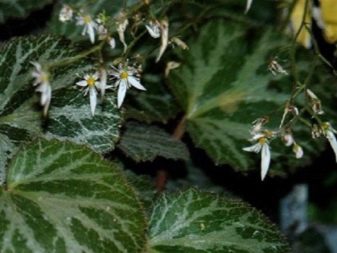
- Cotyledon - a very spectacular saxifrage, visually reminiscent of an exotic succulent. Rounded succulent leaves, united in a dense rosette, and numerous star-shaped flowers give the plant a special decorative effect. The standard color of flowers is white-pink, but now there are other color options.


Swamp
A low-growing herbaceous perennial, the height of which can vary from 10 to 30 (rarely 40) centimeters. It has lanceolate foliage covering erect stems. Star-shaped flowers are small (10-13 millimeters), lemon yellow in color. Growing, the plant forms dense dark green clumps, which look spectacular during the flowering period (August-September).


Opposite-leaved
The opposite-leaved saxifrage, which can often be found in mountainous areas, in forests and even in the tundra, looks really fantastic during flowering. It is characterized by early flowering due to budding from the fall. The leaves are small, dark emerald in color, arranged in pairs. In the flowering phase, it is covered with small pink-red flowers, eventually acquiring a purple-violet hue.
Able to form dense, pillow-like and lush clusters as it grows.

Soddy
A low ground cover perennial found in Eurasia and North America. The leaves of the plant form a volumetric rosette at the roots, above which straight pubescent stems rise.
The blooming period of the soddy saxifrage occurs at the beginning of summer. At this time, the plant forms numerous, but small flowers, the color of which can be white, light pink, pink-red. This variety is notable for its unpretentiousness, resistance to a drop in air temperature, but it is rarely used in gardening and gardening due to its modest appearance. Most often, flower growers grow hybrids of sod and pink saxifrage.


Grainy
An ornamental herbaceous perennial, often used in landscape design. A characteristic feature of the plant is the presence of a tuber (tubers) at the base of the leaf rosette. Stems are straight, covered with fine hairs. During the flowering period, the plant forms many small white flowers, united in clusters. It enters the flowering phase at the beginning of summer. Duration of flowering is 1-2 months.


Mossy
Mossy saxifrage is very popular in landscape design. This perennial ornamental plant is notable for its small height (about 10 centimeters) and its ability to form airy and thick emerald carpets. During the flowering period, this saxifrage forms numerous star-shaped yellow-white flowers with red specks on its short peduncles.

Round-leaved
The round-leaved saxifrage has gained no less popularity among florists and landscape designers. This graceful perennial is notable for its thin branching stems, dark green round leaves and small porcelain-white flowers with red blotches on the petals. Prized for its lush and abundant flowering that begins in late spring and lasts all summer.


Evergreen
Landscape designers do not ignore the unusual evergreen saxifrage called "Purple Mantle". A striking feature of this evergreen perennial is its increased frost resistance, due to which the flower appears directly from under the snow, already covered with green foliage.
Numerous purple-red flowers with a bright yellow core give the plant an unusual decorative effect.

Ice Queen
An amazing decorative variety of saxifrage, notable for its dense evergreen rosettes of elongated leaves and numerous flowers of a snow-white color. The leaves of the plant have a silvery-green color, in harmony with the whiteness of the flowers.
This variety was in demand in landscape design, thanks to its ability to grow quickly and abundantly. Among other advantages of the plant, flower growers note its resistance to low temperatures and the absence of the need for shelter for the winter.

Arends' saxifrage
Arends's delightful saxifrage is especially popular with gardeners and landscape designers. This unpretentious ornamental plant is grown all over the world and is actively used by breeders to obtain new, unusually beautiful varieties. In landscaping, horticulture and landscaping, Arends's saxifrage is most commonly used:
- "Purple Carpet" - undersized plants with numerous flowers of deep purple-violet color;
- "White carpet" - branching and creeping plants, during the flowering period massively form medium-sized snow-white flowers with a yellow-green core;
- "Flower carpet" - ground cover perennials with a varied palette of colors.



Arends' saxifrage can be grown both outdoors and at home. They prefer semi-shaded areas, but are able to grow in sunny areas. Optimum conditions for the development of these perennials are provided by moist and well-drained soil.Also, when growing these plants in the garden or at home, it is important to control the mode and frequency of watering.
These representatives of the Saxifrage family enter the flowering phase in the spring. The duration of flowering depends on climatic and weather conditions. In most cases, plants will flower for 1 to 3 months. For Arends' saxifrage, not only seeds obtained from capsule fruits are used.
Without much difficulty, these perennials can be propagated by cuttings, as well as by dividing rhizomes.


Landing features
Intending to grow such an amazing plant as saxifrage in a garden or at home, you should take into account some of the nuances of its planting. So, if this ground cover is planned to be grown in the open field, it is necessary to determine the most suitable place for it in the garden.
It is desirable that it be an area with loose, moisture and air permeable soil, not devoid of nutrients. You should also take into account the fact that most species of these plants grow very quickly, turning into a thick and lush carpet. For this reason, the place for their planting should be selected "with a margin".



Even more attention will be required when choosing a place for these ground covers in an already landscaped garden. They can be used to fill spaces between trees, decorate curbs, flower beds and alpine slides. Saxifrags integrated into a decorative composition of stones will look very beautiful. It should also be borne in mind that the roots of these plants over time can disrupt the integrity of individual stone fragments that they meet on the way.
Another criterion that should be followed in choosing a suitable site for saxifrage is the height of the mature plants.
While some stunted species of these perennials do not exceed 10-15 centimeters, others are capable of stretching to a height of 0.5 meters or more.


In addition, experienced gardeners remind all those who want to acquire a clump of saxifrage on their site that these plants, even when they grow abundantly, do not get rid of weeds. This means that the owner of the site will still have to regularly weed flower groups so that they do not lose their decorative effect.
Having chosen a suitable corner on the site for planting saxifrage, you should evaluate the quality of the soil in this place. If it turns out that the land in the selected area does not have the required looseness and drainage, flower growers recommend adding such additional components to it as:
- peat;
- lime;
- sand;
- fine crushed stone or crushed expanded clay.


In the case when saxifrage is planned to be grown through seedlings, seeds should be sown in March or early April. It is strongly recommended to stratify the planting material before sowing. This will ensure the best germination of seedlings and their resistance to pests and diseases.
The stratification procedure is as follows:
- one part of the seeds is mixed with five parts of clean sand, moistened and the mixture is placed in a container;
- the container is tightened with a film or closed with a lid, after which it is placed in the refrigerator on the lower shelf for 3 weeks;
- the container is regularly checked and aired and the sand is stirred to prevent mold.


It is recommended to start sowing seeds in open ground in early spring. Sow the planting material superficially, lightly covering it with sand. Before the first shoots appear, the optimum soil moisture should be maintained at the sowing site. For this, many gardeners cover the area where the seeds are sown with foil. This measure allows you to maintain the optimum temperature for germination and prevent rapid evaporation of moisture.
If there is a threat of frost, seedlings must be protected.Despite the resistance of plants to a drop in temperature, gardeners are trying to protect young plants from cold weather with the help of temporary shelters.
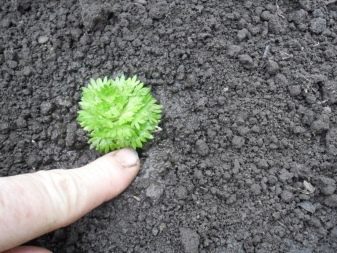

Seedlings of flowers in open ground are usually planted during the period when the spring cold passes (late May-June). It is important to take into account that saxifrage seedlings are very fragile, therefore, they must be handled with extreme care during planting.
It should be noted that sowing saxifrage seeds in open ground is a less popular method among flower growers than growing plants through seedlings. As some observations show, when sowing seeds in open ground, the final results can differ significantly from what is expected. In this case, the germination of seeds and the health of seedlings are affected by many aggressive external factors that the gardener is not able to influence.
It should also be noted that saxifrage, being mostly perennial plants, bloom only in the second year after sowing. Some species enter the flowering phase in the third year.
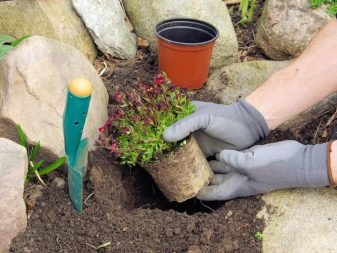

Care rules
In order for the plant to actively develop, to bloom in a timely manner and for a long time, it must be provided with comfortable living conditions. This assumes the fulfillment of such requirements as:
- the required level of illumination;
- compliance with the irrigation regime;
- adherence to the feeding regime;
- suitable soil mixture (soil);
- optimal temperature and humidity conditions;
- competent transplantation (seedlings and indoor plants).


Illumination
Almost all varieties of saxifrage are not particularly demanding on lighting. They feel good in partial shade and take root well in sunny areas. However, plants must be protected from direct sunlight. Exposure to direct sunlight not only inhibits these ground covers, but also negatively affects the color of their flowers and leaves. If the plants remain under the scorching sun for a long time, their foliage and flowers will fade and fade, losing the richness and variegation of their color.
Growing saxifrage indoors, they are provided with a suitable level of illumination by placing the pots on the windowsill in the eastern or western part of the house. It is allowed to install pots in the northern part of the house, but in this case, additional lighting of the plants should be considered. With a lack of light, saxifrages begin to fade, and their leaves and flowers become small.


Irrigation mode
These undemanding plants prefer moderate but regular watering. This procedure should be carried out as the topsoil dries. The most favorable time for watering is in the morning or evening hours after sunset. For irrigation, it is better to use warm, settled water. If plants are watered with cold water, there is a risk of a decrease in their immunity, as a result of which the flowers will become vulnerable to pathogens and pests. Watering during the period when the sun is at its very zenith is strictly not allowed, since water that gets on the leaves and flowers of the ground cover will cause severe burns.
Saxifrags grown in room conditions are also watered with warm, settled water, observing the prescribed regime. It is extremely important to prevent waterlogging of the soil mixture, which can lead to root rot and, as a result, plant death.
In the cool season, the frequency of watering can be slightly reduced, and in hot weather, on the contrary, it can be increased.

Feeding mode
For all their simplicity, saxifrage responds positively to fertilization. Plants grown outdoors are usually fed with mineral fertilizers and organic matter. With regard to the use of nitrogen fertilizers, experienced flower growers recommend caution, since an excess of nitrogen can lead to "fattening" of plants. In this state, ground cover plants give abundant green mass, but practically do not bloom. Top dressing, like watering, is stopped on the eve of cold weather, when the plants are prepared for wintering.
Representatives of the family Saxifrage, which grow at home, can be fed all year round. Having picked up a suitable compound fertilizer, it is used in accordance with the prescribed schedule. So, flower growers recommend gradually feeding the plants once every 2 weeks in spring and summer, once every 1.5 months in autumn and once every 2 months in winter.
It is important to take into account that saxifrage growing both in open ground and in indoor conditions does not tolerate an excess of nutrients in the soil. For this reason, you cannot feed them too often.


The composition of the soil mixture
Loose, moisture and air permeable soil with neutral acidity is considered the most favorable for saxifrage. When growing these plants in open ground in marginal areas, it is recommended to add a mixture of such components as:
- sod land - 2 parts;
- sheet land - 1 part;
- coarse sand - 0.5 parts.
This composition can be improved by adding one part of peat land and compost to the above components. Before applying to the soil, the resulting mixture is diluted with small fragments of drainage.


Temperature and humidity conditions
Most varieties of saxifrage are resistant to temperature drop and extremes. Too hot weather outside or high air temperature in the room negatively affect the well-being of these plants. Under the influence of high temperatures, the flowers of the ground cover begin to shrink, and the leaves lose their juiciness and elasticity.
When growing these plants in indoor conditions, it is not allowed to place them near heating appliances. Novice flower growers often make a serious mistake by placing flower pots for the winter near heating radiators. As a result, under the influence of hot and dry air, saxifrage begins to hurt.

The optimal temperature ranges for keeping these flowering plants are:
- 22-25 ° in summer;
- 18-19 ° during the cool season.
In very hot weather, when the air outside and in the room becomes dry, flower growers recommend irrigating saxifrage with warm, settled water. This procedure should be performed early in the morning or in the evening, so that the moisture from the plants has time to evaporate by the beginning of a new daylight hours.
However, it is impossible to abuse irrigation and spraying, since excessive moisture can cause the development of fungal diseases.

Competent transplant
Indoor saxifrage needs replanting from time to time. The need for this procedure is primarily due to the peculiarities of the root system of these plants. In their natural habitat, their roots develop very actively, requiring more and more free space. Given this feature, the pot in which the saxifrage grows should be replaced in a timely manner with a more spacious container.
Florists recommend replanting plants even if their age has reached 5 years or more. Regardless of whether a flower transplant was previously carried out at a younger age, the potting substrate must be completely changed.


Plants affected by diseases or pests must be transplanted without fail. In this case, the transplant should be accompanied by a full-fledged treatment of the green pet, the processing of its aerial part and roots, as well as a complete change of the soil mixture. The most painless way of transplanting plants is transshipment. With this method, the ground cover is transplanted together with a lump of earth on the roots.
Transplanting seedlings into open ground requires very careful manipulation. Considering that the roots of saxifrage seedlings are rather fragile, the plants are thoroughly watered before the procedure.Then each seedling is carefully removed from the container along with an earthen clod and planted in a prepared hole.

Reproduction methods
Reproduction of saxifrage is a fairly simple procedure that even an inexperienced but responsible amateur florist can handle. One of the important conditions on which the results of the work depend is the quality of the planting material used for plant breeding.
The saxifrage reproduces with the help of:
- seeds;
- layering;
- dividing the bush.

Seed propagation
Before sowing, the small seeds of the plant are necessarily stratified. After this procedure, sowing is carried out in shallow planting containers filled with a universal soil mixture or a mixture of peat, turf, humus and sand. The soil should be soaked before sowing.
Seeds are sown superficially, without burying them into the substrate. At the end of the work, the seeds are lightly sprinkled with fine sand. If the planting material is excessively covered with soil, its germination potential will be drastically reduced. After sowing, the container is tightened with foil and placed on a warm and well-lit window. Usually, seedlings appear after a week, but in some cases, seed germination can take 10-14 days. After the first shoots appear, the film is removed. While young seedlings are growing, the room temperature should be maintained at 20-22 °.
Watering the seedlings is required regularly, but in moderation, avoiding stagnation of water in the substrate.

Reproduction by layering
This method is used after the donor plant has finished flowering (usually in the middle of summer). Then, choosing the strongest side stems, they are bent to the ground and pinned with a wooden or plastic bracket. Earth is poured over the staples and spilled abundantly. While the cuttings are taking root, the soil at the location of the staples is constantly moistened.
Before wintering, the rooting layers are covered with a layer of spruce branches or covered with sawdust. If all the manipulations are performed correctly, then in the spring the gardener will receive a new young plant, which can be easily separated from the donor bush and transplanted to another place.

Splitting the bush
To implement this method, it is necessary to choose a healthy and strong donor plant. Before the procedure, you should also prepare the landing pits in advance. It is best to arrange them in a slightly shaded place. Having dug a hole, on its bottom you need to lay fragments of drainage (expanded clay, pebbles, gravel), pour a mixture of lime, compost, earth and sand on top. This will ensure optimal acidity and sufficient moisture and air permeability of the soil.
1-2 hours before the procedure, the donor bush is spilled abundantly in order to facilitate its extraction from the ground. Then the plant is carefully dug out, being careful not to damage the roots. After that, using a sharp shovel, the bush is divided into several parts with confident and precise movements. The resulting parts are transferred into the holes, covered with earth, compacted from all sides and watered abundantly. Before wintering, the planted parts of the plants are covered with spruce branches.

Diseases and pests
Saxifrages are valued by flower growers not only for their luxurious flowering, but also for their resistance to damage by pests and pathogens. Possessing good immunity by nature, these plants take root even in very difficult conditions. Most often, their resistance to diseases and parasites is sharply reduced if the conditions of detention and the lack of care are not observed.
According to flower growers, the main enemies of saxifrage beauties are diseases and pests such as:
- powdery mildew;
- spider mite;
- aphid;
- rotting roots.

With the defeat of the saxifrage powdery mildew a whitish bloom begins to form on the leaves of the plant. As the disease progresses, the leaves acquire a brown hue, and then dry up and fall off.The cause of the disease in this case, most often, are violations of the temperature and humidity regime. For the treatment of the damaged plant, it is necessary to use the fungicidal preparations Fundazol, Quadris, Topaz.
That the saxifrage suffered from spider mite, evidenced by the appearance on the leaves of a white bloom with a fine fibrous structure.
The activity of the pest in this case can lead to the death of the ground cover, therefore, treatment should be started immediately.


Among the main conditions contributing to the appearance of a spider mite is increased dryness of the air, as well as the contact of a healthy plant with a sick one. Thorough treatment of the plant with Fitoverm allows you to get rid of the parasite.
Aphid - the most common pest of garden and home flowers. Colonies of these tiny parasites feed on plant juices, leaving their waste products on their leaves and flowers. If you do not start processing green pets from aphids in a timely manner, this can lead to the death of plants.
There are many reasons for the appearance of aphids on plants growing in open ground. On indoor flowers, this pest can appear when brought with poor-quality soil or with a new infected plant. For the destruction of the parasite, it is required to carry out a thorough processing of the plant using complex preparations "Kalash", "Aktellik", "Aktara". Very good results in the fight against aphids are obtained by the use of Fitoverm and Tanrek.

Rotting roots Is a common problem faced by inexperienced growers who have not previously grown saxifrage. The fact that the root system has suffered greatly from the causative agents of putrefactive processes is evidenced by the wilting of the entire aerial part of the saxifrage, the fall of its flowers and the gradual death of the entire plant.
The main reason for this problem is waterlogging of the soil due to excessive watering and poor drainage. For the treatment of the disease, fungicidal preparations for garden and indoor flowers are used - "Discor", "Glyokladin", "Alirin B".
The main measure for the prevention of diseases and pest damage is to comply with all recommendations for caring for ground cover.


Use in landscape design
Intending to use the saxifrage to decorate the backyard territory, one should take into account the peculiarities of its type and variety. An important role in this case is played by the height of the plant, the intensity of its growth, the color of the flowers and the duration of flowering.

This decorative ground cover is successfully used to decorate stone compositions, rockeries, alpine hills, borders. It can be grown alone or in groups with other groundcover perennials of suitable color.

An extensive group planting of saxifrage in the foreground of the site is a wonderful decoration of the backyard territory. In this case, flowering tall plants are planted behind the group of ground covers.

The saxifrage organically complement the garden, made in the now popular eco-style. Growing abundantly over the backyard, they create a lush pillow-like carpet that looks spectacular during the flowering period.

These plants can be used to frame and separate the functional areas of the site. So, with their help, it is easy to distinguish between a resting place and a garden, or to emphasize the beauty of a flower garden, separating it from the rest of the zones with a strip of ground cover.
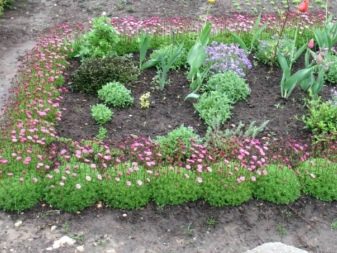
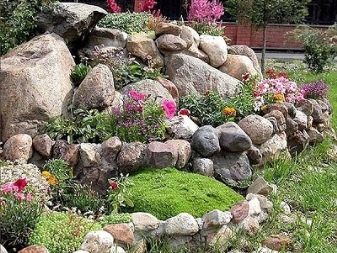
Saxifrage looks original in combination with other flowering plants. Given this feature, they are often planted with petunias and tulips. If you plant these ground covers with subulate phloxes, then they quickly form lush and voluminous curtains that amaze the imagination not only with their variegated colors, but also with amazing aromas.


In the next video, you are waiting for the cultivation and reproduction of saxifrage.

































































































The comment was sent successfully.